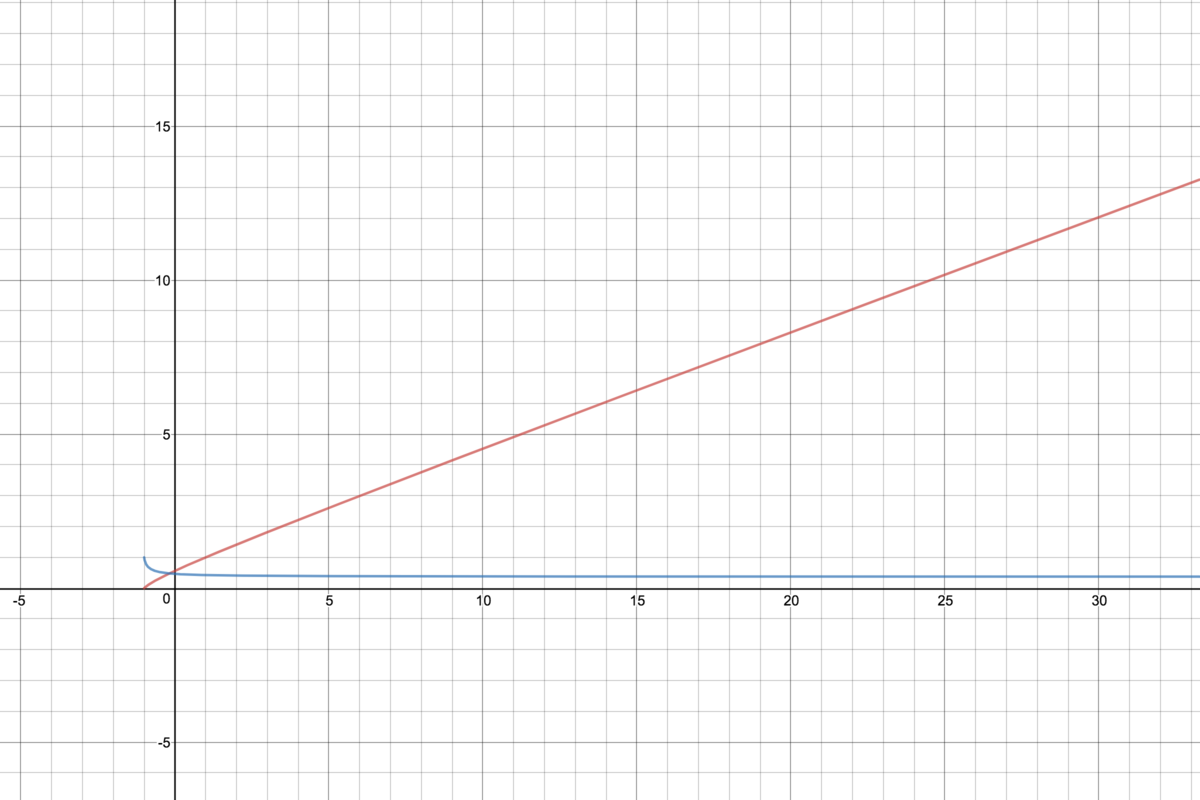Calculus + Factorial = ?
Recently, I've been messing around with factorials (mainly because I was just told that ). I came across a couple calculus problems involving the function. Since I am very new to calculus, I figured I should ask the community on how to get the answers and what they are, not just by typing them into Wolfram Alpha and seeing what comes out.
Since increases so rapidly, I decided taking the root of . This gave me the function, . That function is the red graph in the picture below.

I noticed that, even though is undefined (since is undefined), it still appears to have a value. That is my first problem: to find
Next, I noticed that is not linear. However, it appeared to be linear, so I decided to graph the derivative, which gave me the function . This is the blue graph in the picture above. Since approached linearity (?), I knew that must have a limit as it approached infinity. That leads me to my second problem: to find
The graph is at this link.
NOTE: The domains of both functions stop before 171 because 171! is a massive number, to the point that most online calculators can't handle.
Easy Math Editor
This discussion board is a place to discuss our Daily Challenges and the math and science related to those challenges. Explanations are more than just a solution — they should explain the steps and thinking strategies that you used to obtain the solution. Comments should further the discussion of math and science.
When posting on Brilliant:
*italics*or_italics_**bold**or__bold__paragraph 1
paragraph 2
[example link](https://brilliant.org)> This is a quote# I indented these lines # 4 spaces, and now they show # up as a code block. print "hello world"\(...\)or\[...\]to ensure proper formatting.2 \times 32^{34}a_{i-1}\frac{2}{3}\sqrt{2}\sum_{i=1}^3\sin \theta\boxed{123}Comments
According to Wolfram Alpha, limx→0f(x) is an interesting value.
It is not immediately apparant to me why this is true as yet.
Note: γ is the Euler-Mascheroni constant.
Note that f(x)≈ex for larget values. Hence, if there is any justice in the world (meaning that if the limit exists), it is most likely that \lim g(x) = \frac{1}[e} .
However, there is a slight flaw in your logic. Namely, the following statement is not true: "If ∣f(x)−g(x)∣<ϵ for all x, then limg′(x)=limf′(x).".
An extra condition will need to be added to arrive at "If f(x)≈g(x) (in some manner), then limg′(x)=limf′(x)."
L=n→0lim(n!)n1=n→0lim(Γ(n+1))n1 L=n→0limenln(Γ(n+1))=elimn→0nln(Γ(n+1))
Using L'Hospital rule we get L=elimn→0ψ(n+1)=eψ(1)
And using ψ(1)=−γ we get L=e−γ
Where Γ(.) is the Gamma function, ψ(z) is the Digamma function and γ is the Euler-Mascheroni constant
I did some experimenting with factorials, here are some interested facts:
Those limits are derived from the gamma function, and the second one seem to evaluate to e1